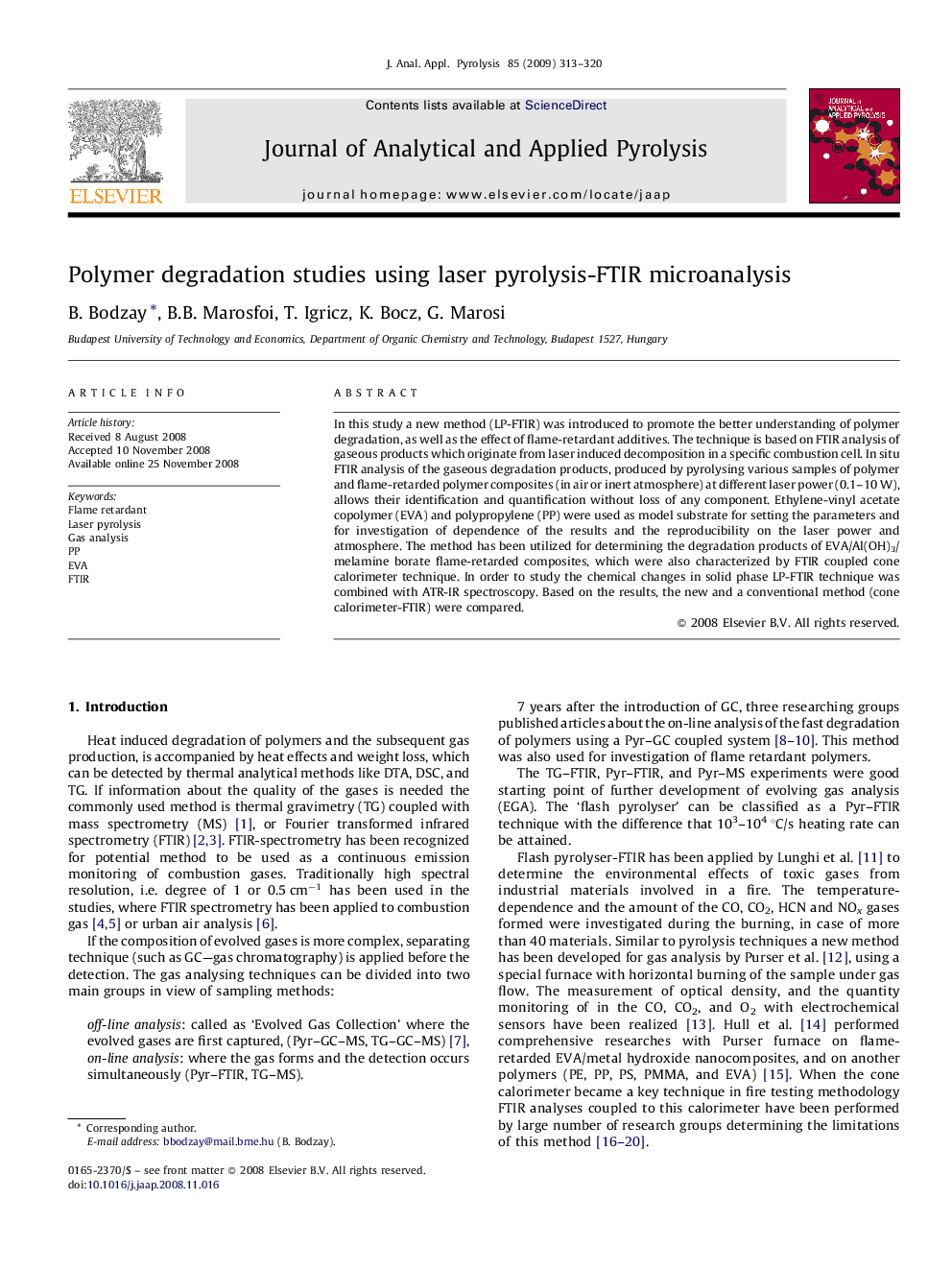| Article ID | Journal | Published Year | Pages | File Type |
|---|---|---|---|---|
| 1197526 | Journal of Analytical and Applied Pyrolysis | 2009 | 8 Pages |
In this study a new method (LP-FTIR) was introduced to promote the better understanding of polymer degradation, as well as the effect of flame-retardant additives. The technique is based on FTIR analysis of gaseous products which originate from laser induced decomposition in a specific combustion cell. In situ FTIR analysis of the gaseous degradation products, produced by pyrolysing various samples of polymer and flame-retarded polymer composites (in air or inert atmosphere) at different laser power (0.1–10 W), allows their identification and quantification without loss of any component. Ethylene-vinyl acetate copolymer (EVA) and polypropylene (PP) were used as model substrate for setting the parameters and for investigation of dependence of the results and the reproducibility on the laser power and atmosphere. The method has been utilized for determining the degradation products of EVA/Al(OH)3/melamine borate flame-retarded composites, which were also characterized by FTIR coupled cone calorimeter technique. In order to study the chemical changes in solid phase LP-FTIR technique was combined with ATR-IR spectroscopy. Based on the results, the new and a conventional method (cone calorimeter-FTIR) were compared.
